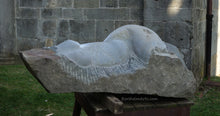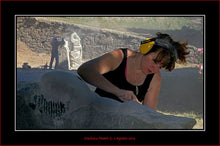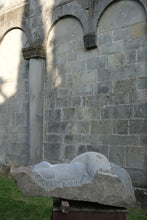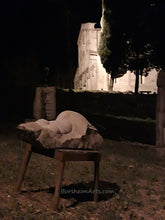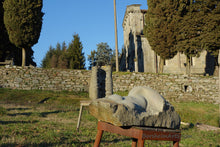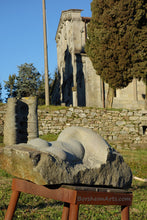
This was my very first symposium for carving a stone sculpture in eight days. (Two days were spent going to Cava Nardini in Vellano, the quarry, to choose our stones and then move them all to Castelvecchio to about 8 sculptors's carving sites in and around La Pieve. Keep reading for more information on La Pieve.
I was invited to my very first professional stone carving symposium because of a series of introductions from one Italian friend to a new one, and then a new one, and another...
My first symposium occurred in Castelvecchio, in Tuscany, directly north of Pescia, as the crow flies. If you were to “Google” it, you must zoom in quite close before it even shows up. This area of the mountains is called Valleriana and consists of small, charming towns, many reaching back to the Medieval days.I asked to invite my street painting and marble carving friend Kumiko Suzuki to come with me. We were given a small two-bedroom stone house to ourselves. This symposium, titled "Castelvecchinpietra.2013: Scolpire la Pietra in Valleriana" with the subtitle: "Simposio Internazionale di Scultura della Pietra Serena" and was held 24 July through 4 August 2013. The Artistic Director was Silvio Viola, a sculptor who moved to Castelvecchio in 2008 and created this series of symposia for his new village. This was the fourth symposium for Castelvecchio.
Sculptors involved were: Vera Bauer & Anne Flore (German installation artists who live in Vellano, Italy, where "our" quarry is), yours truly (Kelly Borsheim, American living in Italy), Natthapon Muangkliang (Thailand), Ivan Paraskov (Bulgaria), Pavel Petras (The Slovak Republic), Giuseppe Strano Spitu (Italian living in Spain) and Kumiko Suzuki (Japanese living in Italy).
If you are interested in seeing some live action, please watch this video on YouTube:



La Pieve dei Santi Ansano e e Tommaso (The parish church of the saints Ansano and Thomas) was documented in 879 A.D. and was heavily restored in the nineteen century. I have never seen a church in Italy with such primitive carvings of heads on the outside of the church. I am horrible with classifying art and describing styles, but even other articles on the Internet described the carvings as possibly African or Mayan or like the Aztec. Each column inside has decorative designs, but not matching, as was the aesthetic in much later years.






